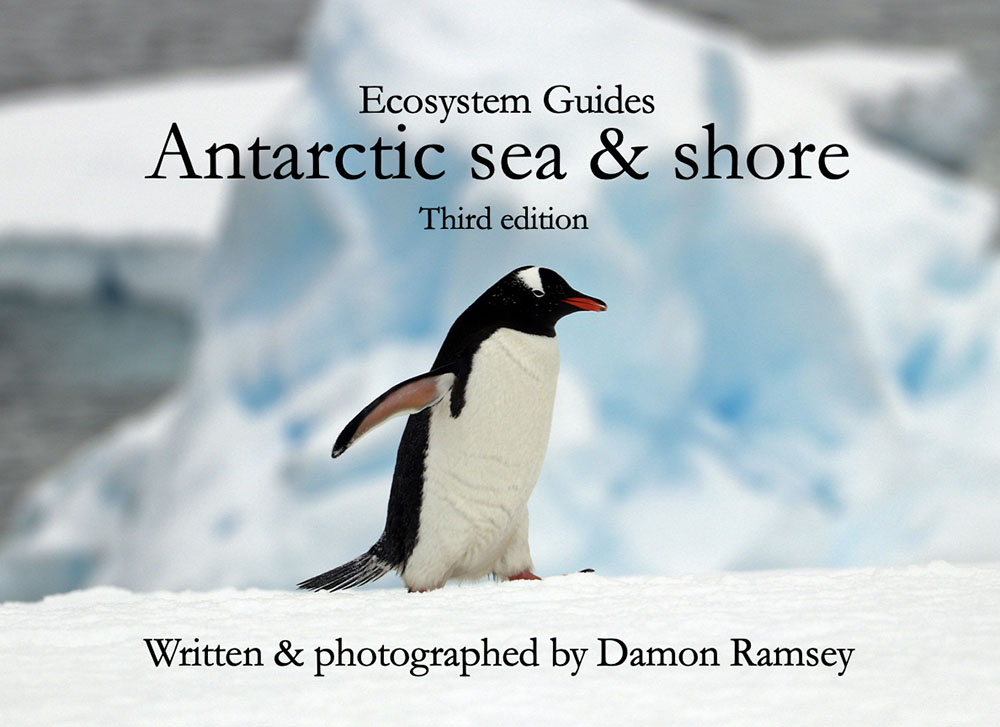ecosystem-guides.com
....exploring the planet's ecosystems
NEOTROPICAL (southern South American)
Temperate Seashore
The shorelines of the the lower triangle of southern South America are extensive due to the broken up mainland, convoluted channels, and islands. The coast includes a variety of different landscapes from step fjords to remote beaches. There is a high diversity of birds and mammals, including endemics. The cooler waters of the Humboldt current that sweep in from Southern Ocean waters and along the west coast of South America push the temperate seashore plants and animals further north up the west coast than the equivalent latitudes on the east coast.
The stunningly steep Chilean fjords include many glaciers that are still carving their way through to the sea.
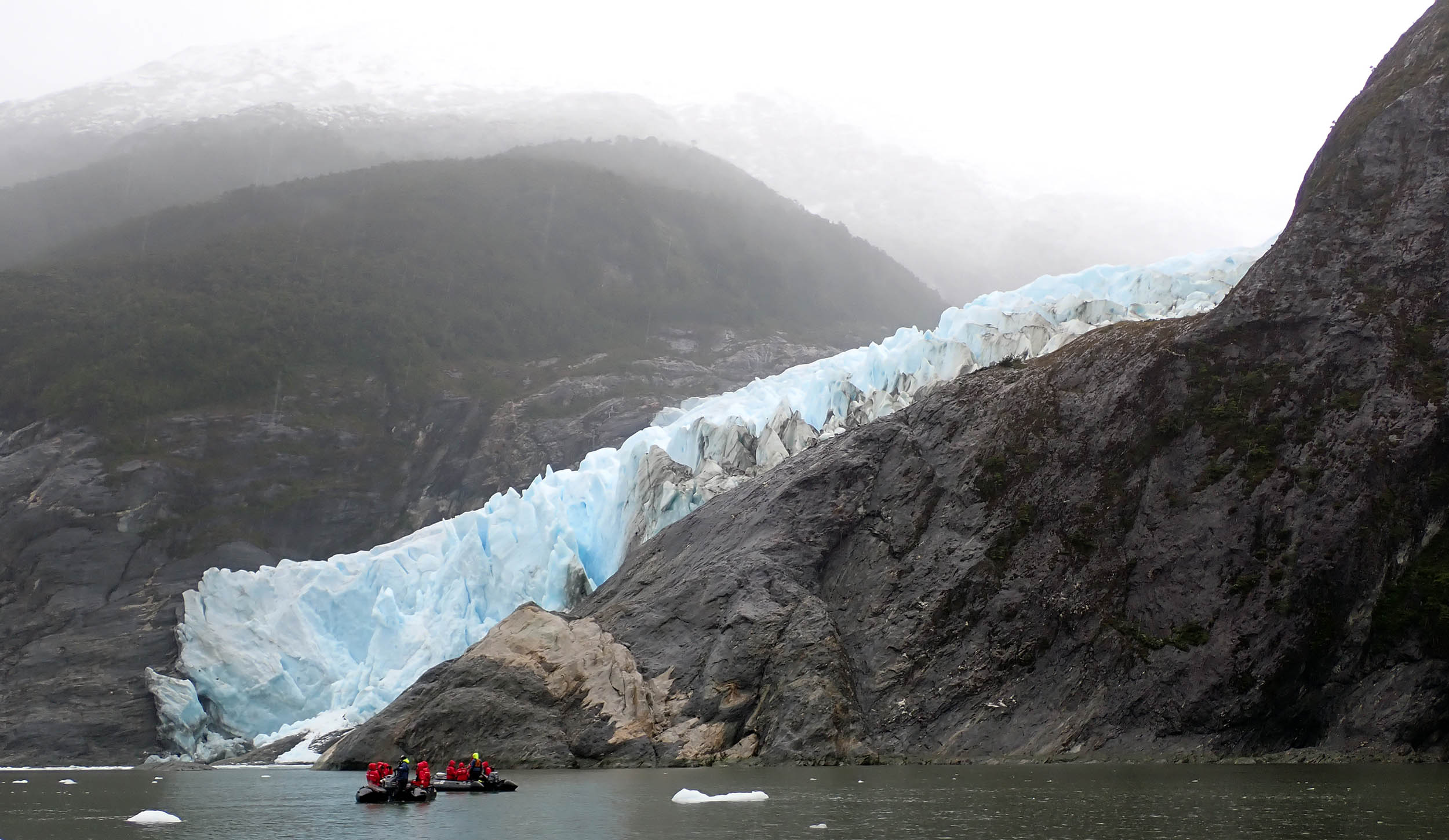 (Garibaldi, Chile fjords)
(Garibaldi, Chile fjords)This ocean region extends out to the dramatic high cliffs of the Tristan da Cunha group in the southern mid-Atlantic.
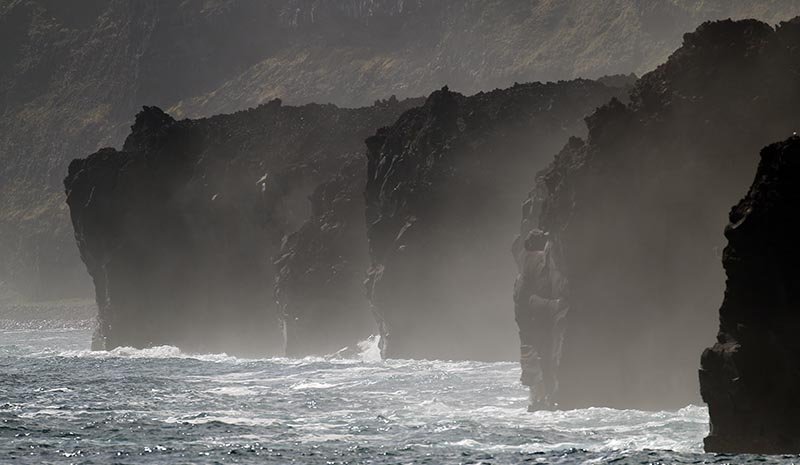 (Tristan da Cunha)
(Tristan da Cunha)Durvillaea antarctica, ‘New Zealand Bull Kelp’. Some Bull Kelps have a honeycomb structure in fronds that hold air and aid buoyancy; they swish about in the water along the intertidal zone like slippery snakes. The most widespread and most commonly seen Bull Kelp: as suggested by common name, found in New Zealand, but also in subantarctic and southern South America.
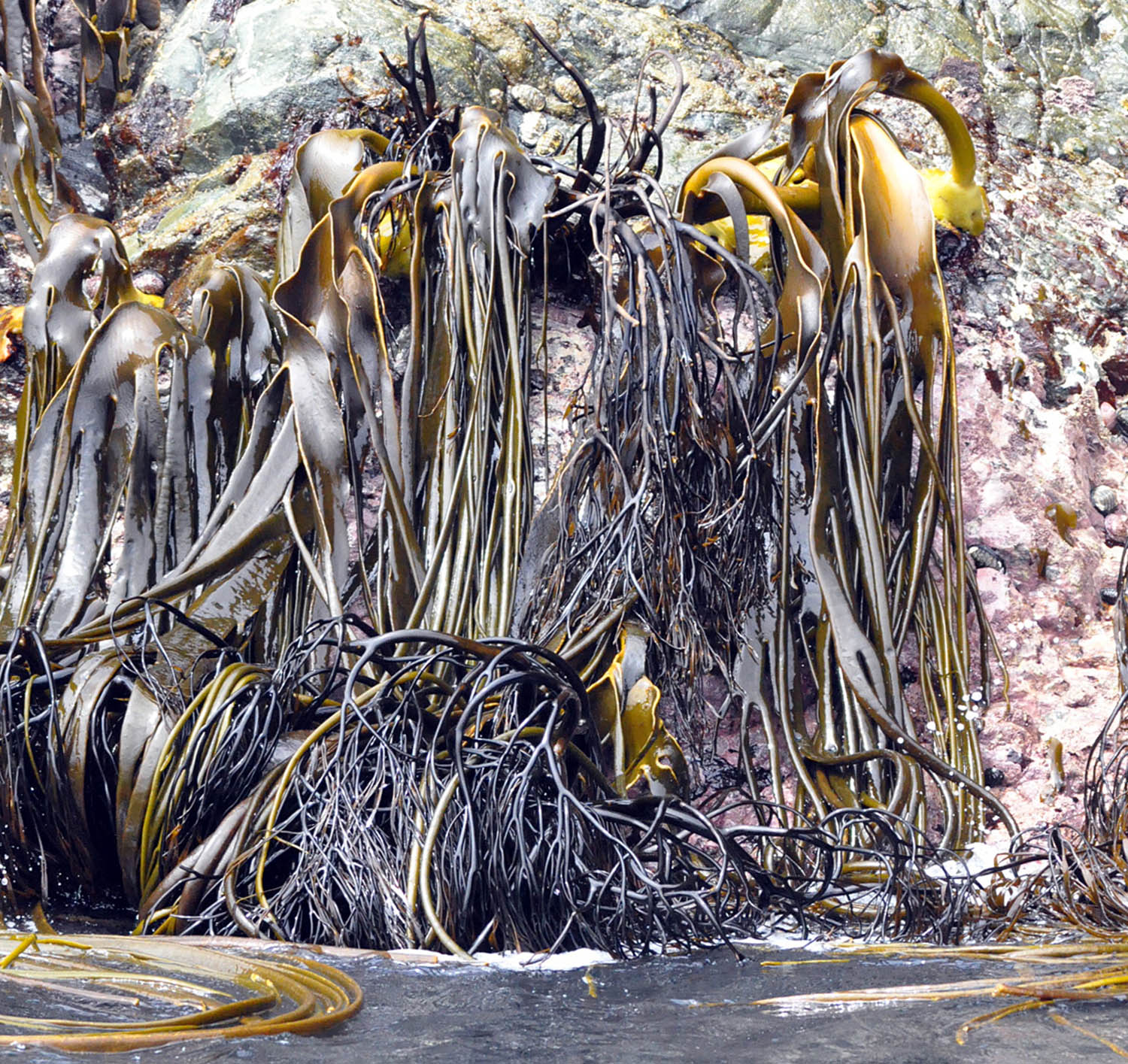 (Chilean Fjords)
(Chilean Fjords)Stichaster striatus, ‘Common Light-striated Sea Star’. In 2006, research published in the Journal of Ethnopharmacology revealed that when ‘alcoholic’ rats were fed an extract from this species of sea-star, they reduced their voluntary intake of alcohol! These experiments had been inspired by stories from the 17th and 18th century that Jesuit property-owners in South America fed "starfish soup" to their workers to increase sobriety.
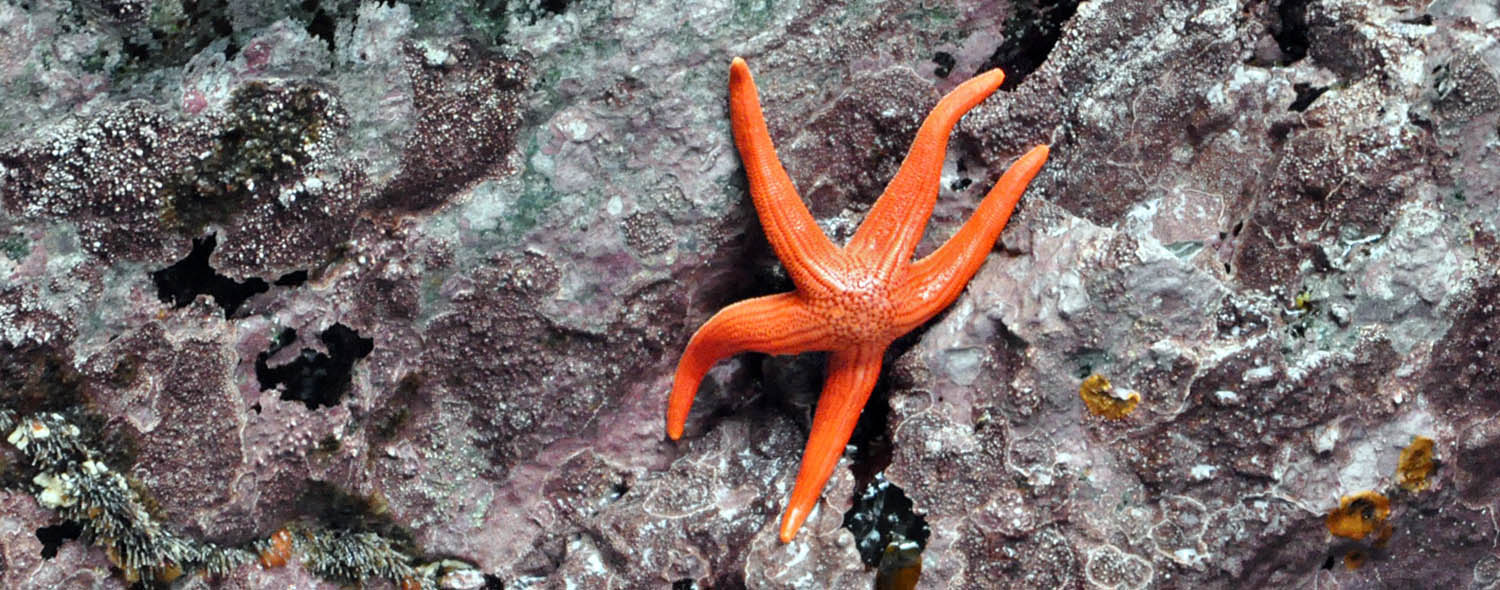 (Chilean Fjords)
(Chilean Fjords)Heliaster helianthus, ‘South American Multiradiate Sun Star’. Unusually for a sea star, has 28 - 39 arms. Found on the Pacific coast (western South American) in Chile, Peru, and Ecuador.
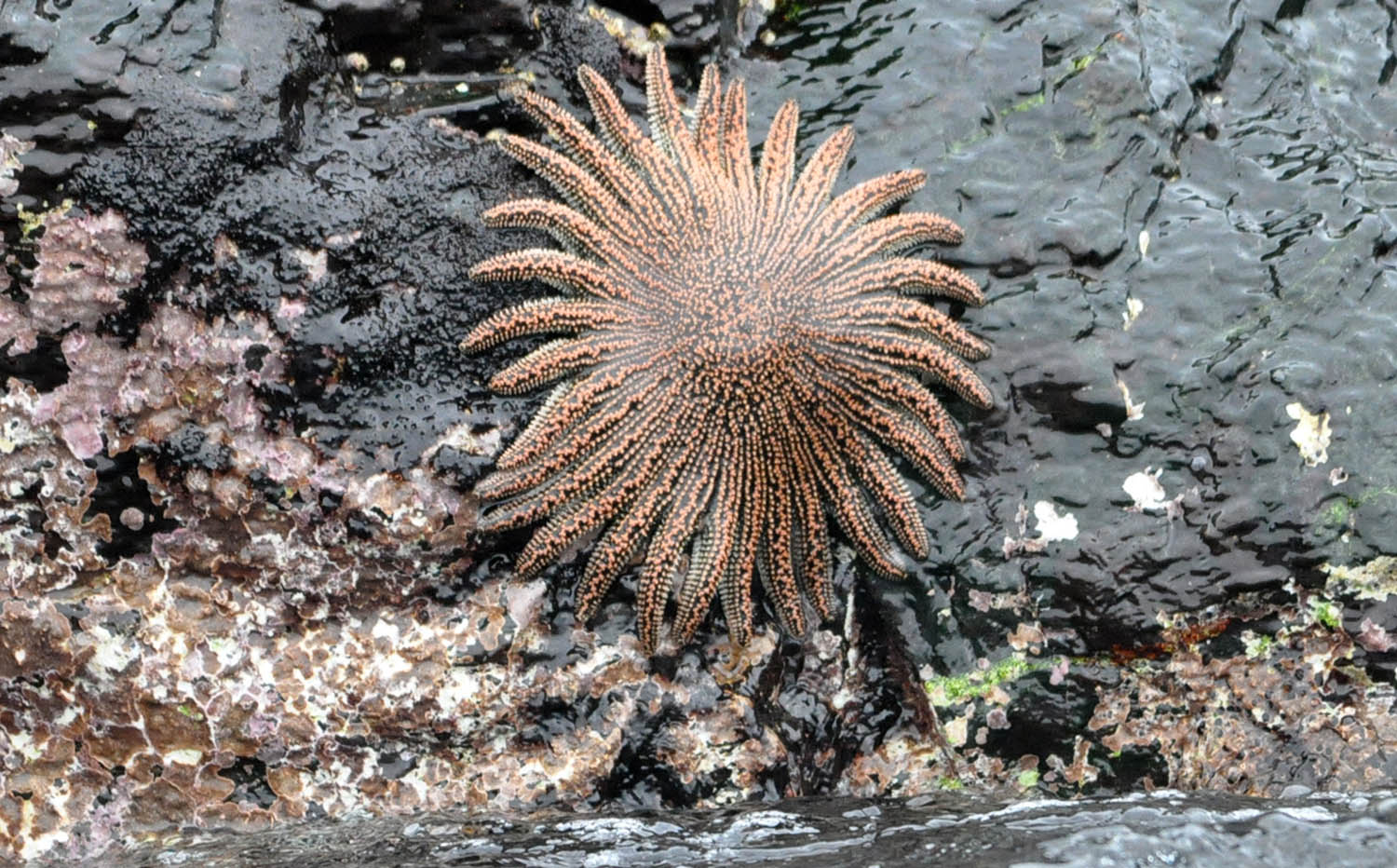 (Chanaral, Chile)
(Chanaral, Chile)The temperate coasts of southern South America include an interesting variety of endemic species of ducks and geese, including...
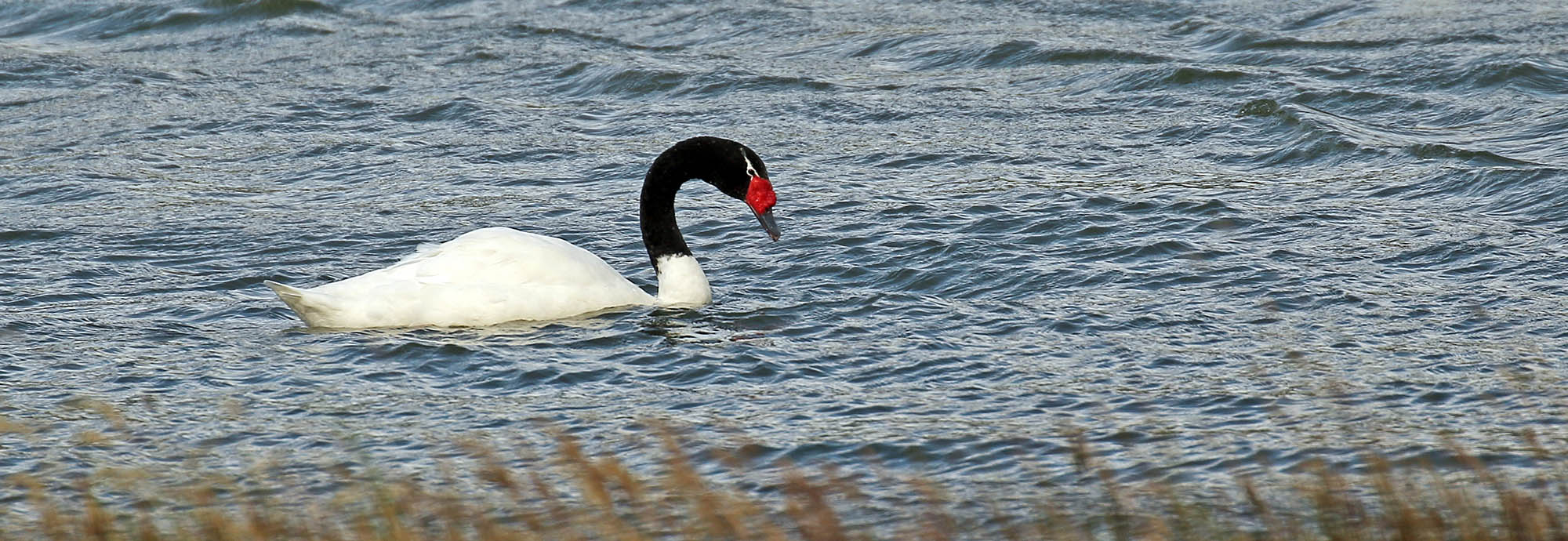 ‘Black-headed Swan’, (Ushuaia, Argentina)
‘Black-headed Swan’, (Ushuaia, Argentina)This is a small genus of five 'shelduck' geese that are endemic to southern South America.
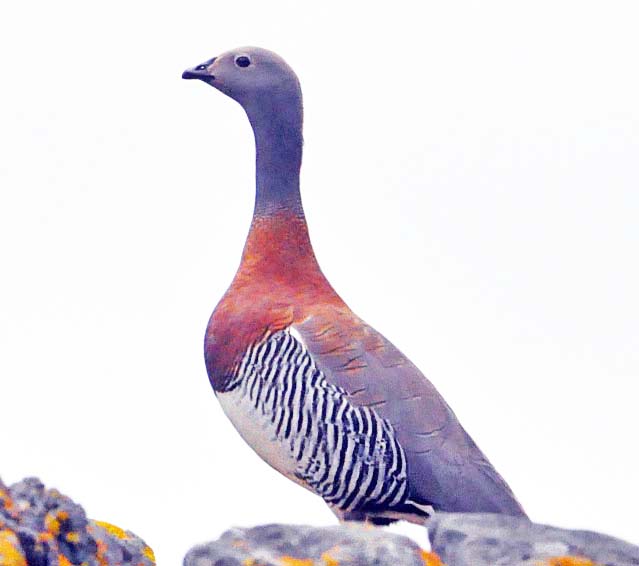 (Tic Toc nature reserve, Chile)
(Tic Toc nature reserve, Chile)Chloephaga poliocephala, 'Ashy-headed Goose'. Live and breed along southern South American coast in summer, move inland to Argentine pampas grasslands in winter.
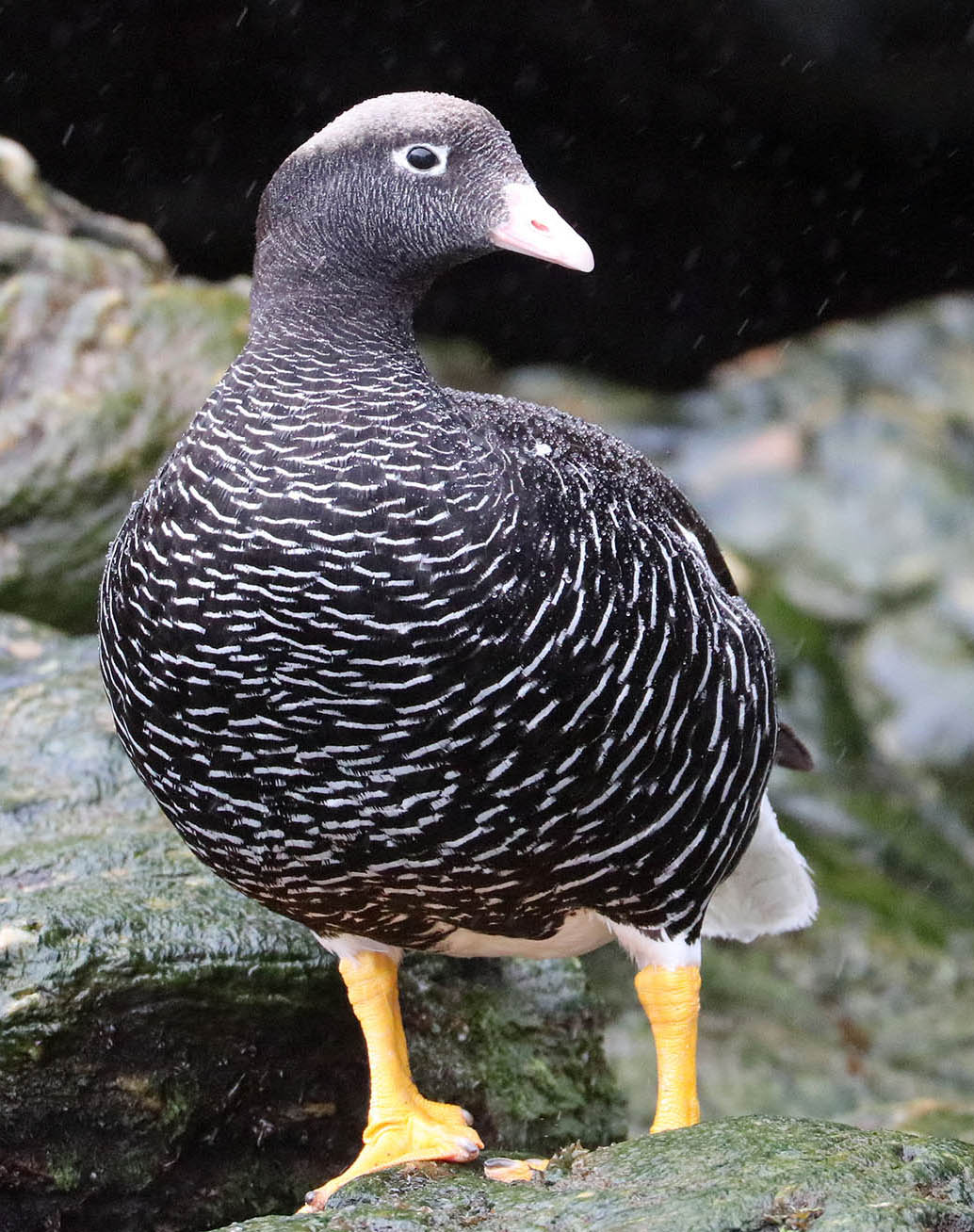 (male Kelp Goose, Garibaldi)
(male Kelp Goose, Garibaldi)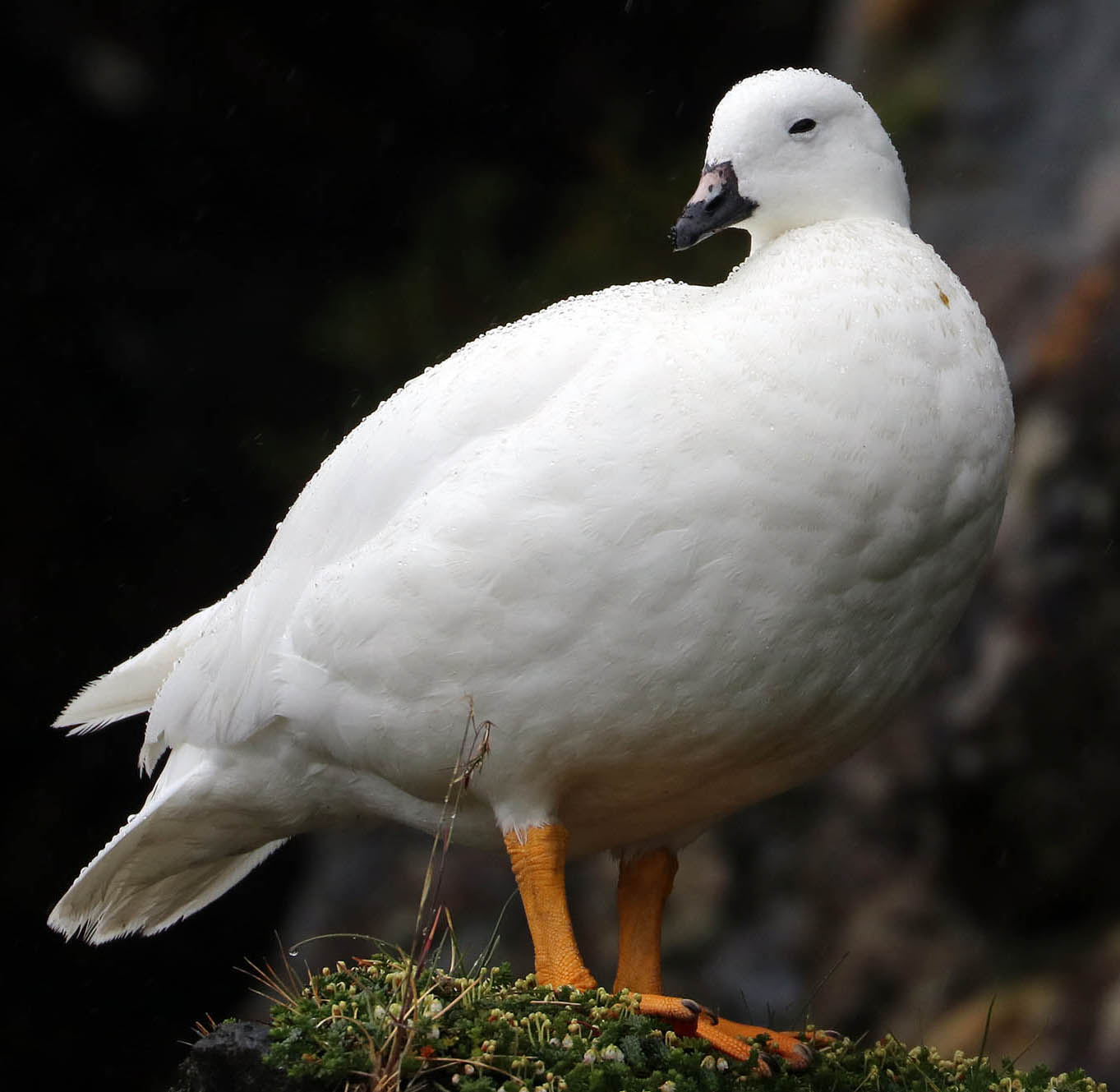 (female Kelp Goose, Garibaldi)
(female Kelp Goose, Garibaldi)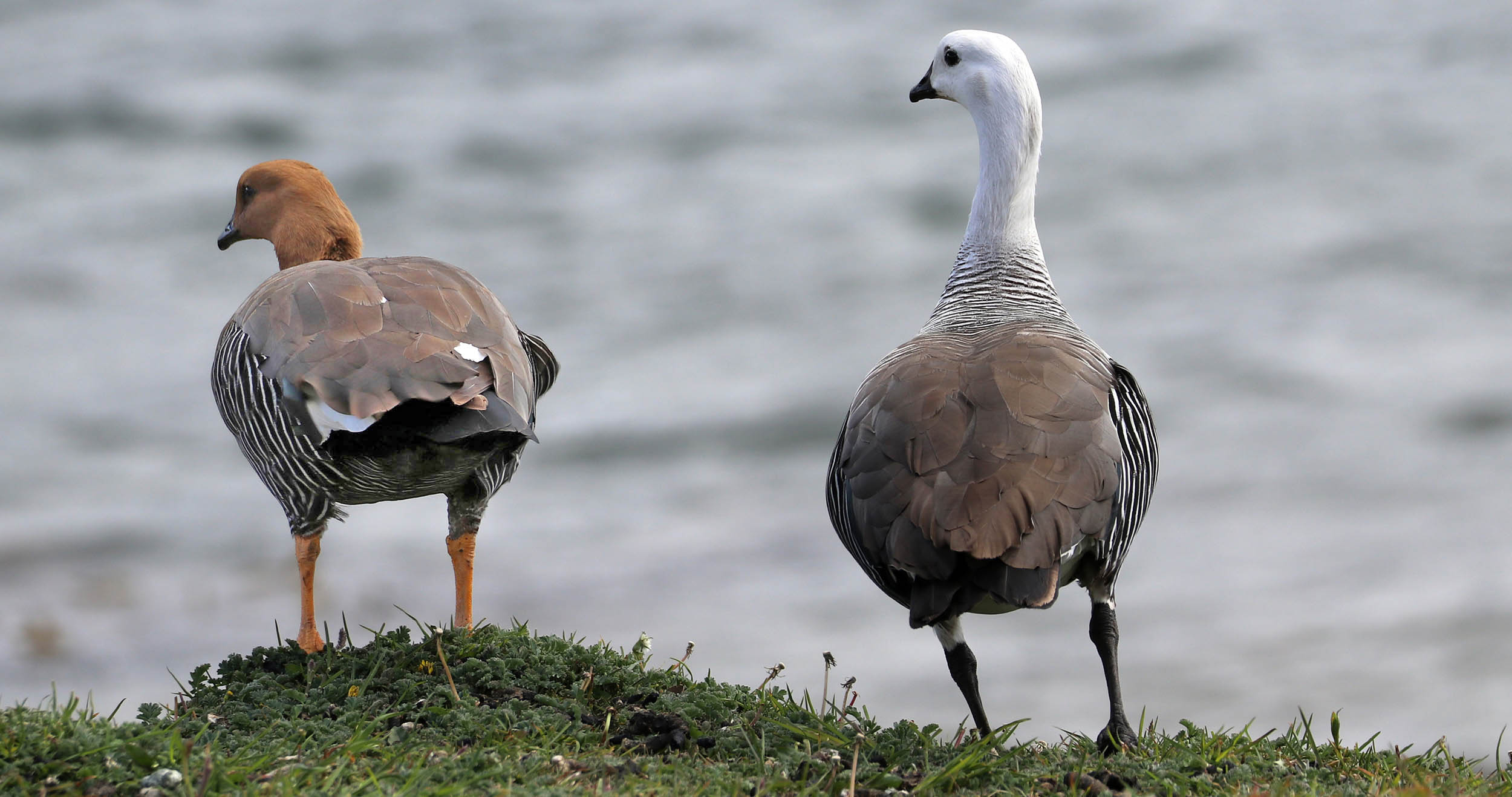 'Upland Goose'. (Puerto Williams, Chile)
'Upland Goose'. (Puerto Williams, Chile)The globally distributed Oystercatcher family Haematopodidae includes several local species, including: Haematopus ater, 'Blackish Oystercatcher'.
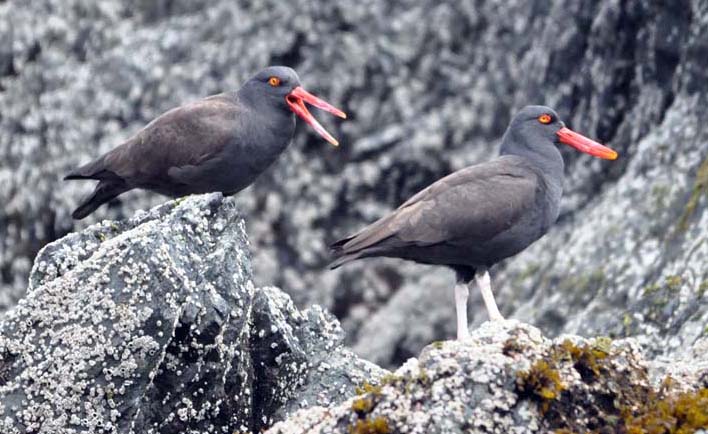 (Chile)
(Chile)Below is Sterna hirundinacea, 'South American Tern'. It has a bright red bill and black cap in breeding adults, with a swallow'-like forked tail.
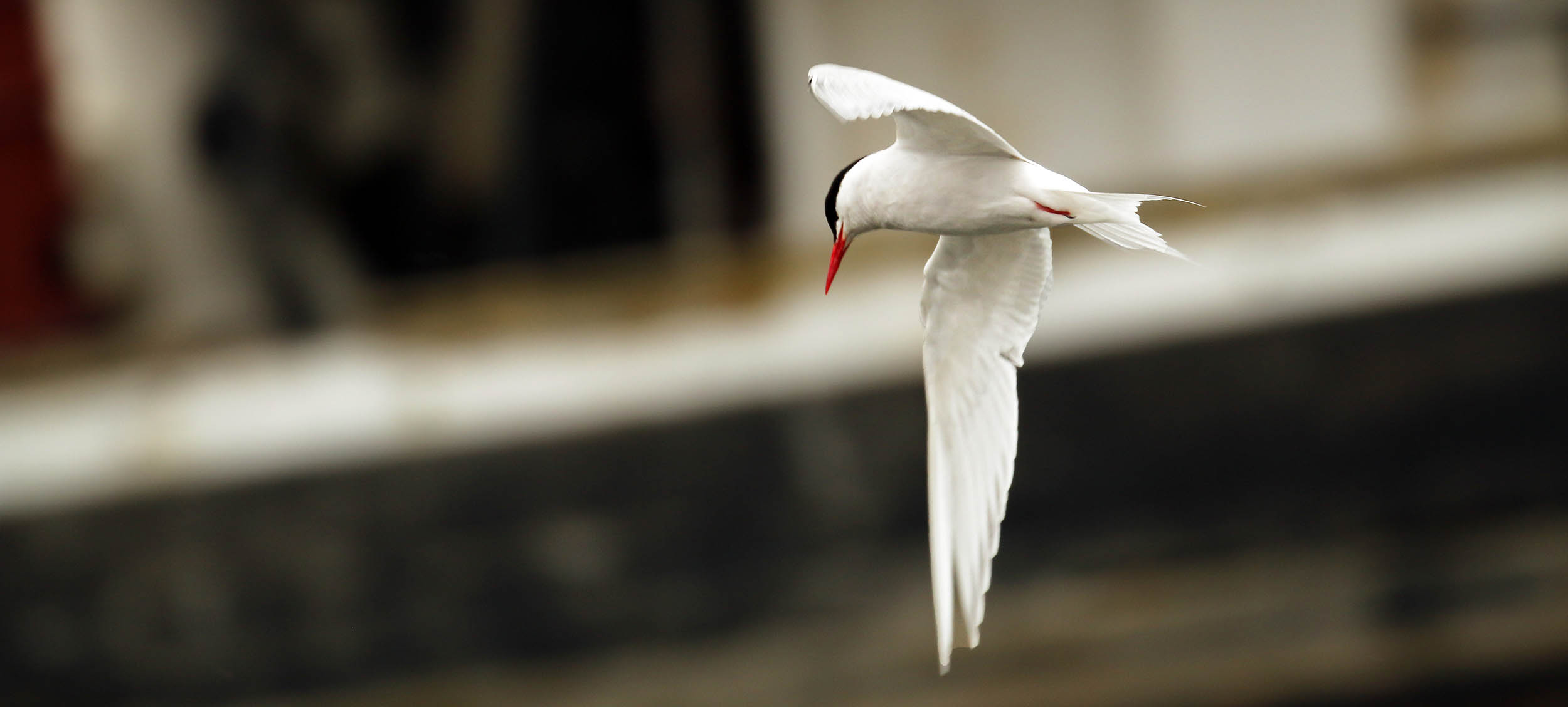 (Ushuaia, Argentina)
(Ushuaia, Argentina)Depending on your taxonomy, there are up to 20 species in the Penguin family. While many people think of penguins as being found exclusively around Antarctica, there are many in the temperate areas of the southern hemisphere, and southern South America is no exception. There are two species commonly found along the west coast of temperate South America, and of course there are always vagrants.
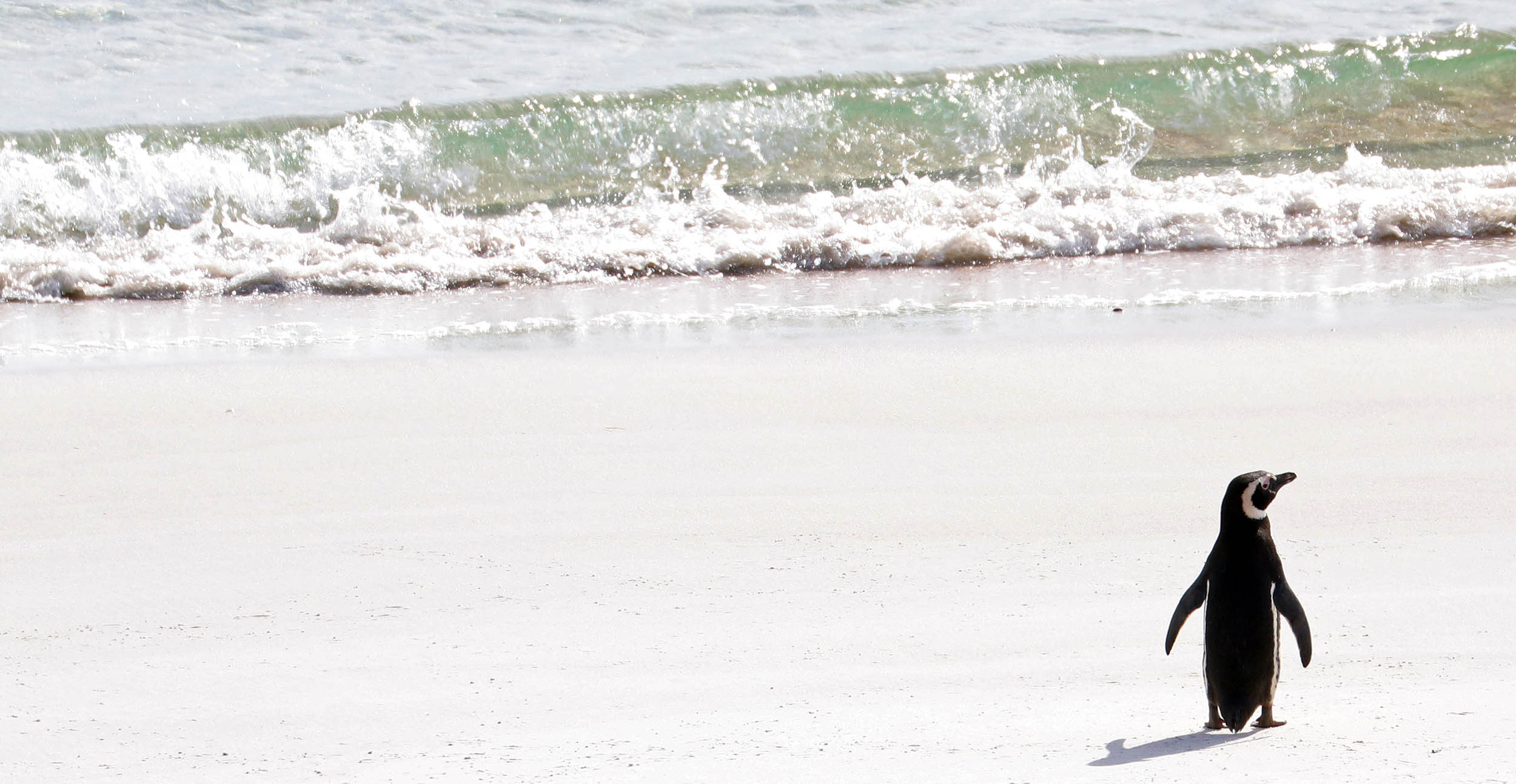
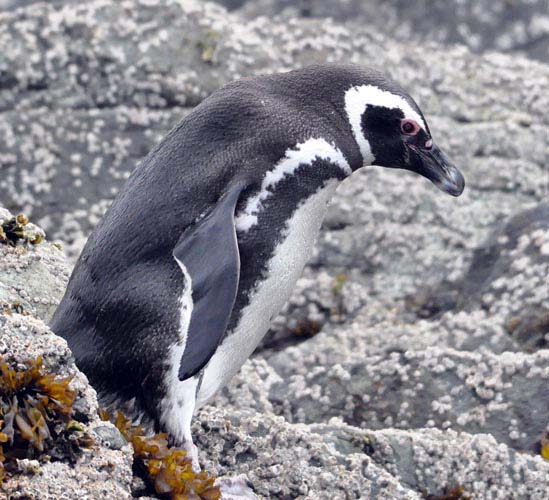 'Magellanic Penguin', (Tic Toc nature reserve, Chile)
'Magellanic Penguin', (Tic Toc nature reserve, Chile)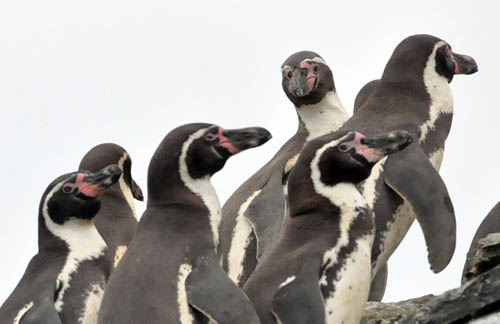 'Humboldt's Penguin', (Northern Chile)
'Humboldt's Penguin', (Northern Chile)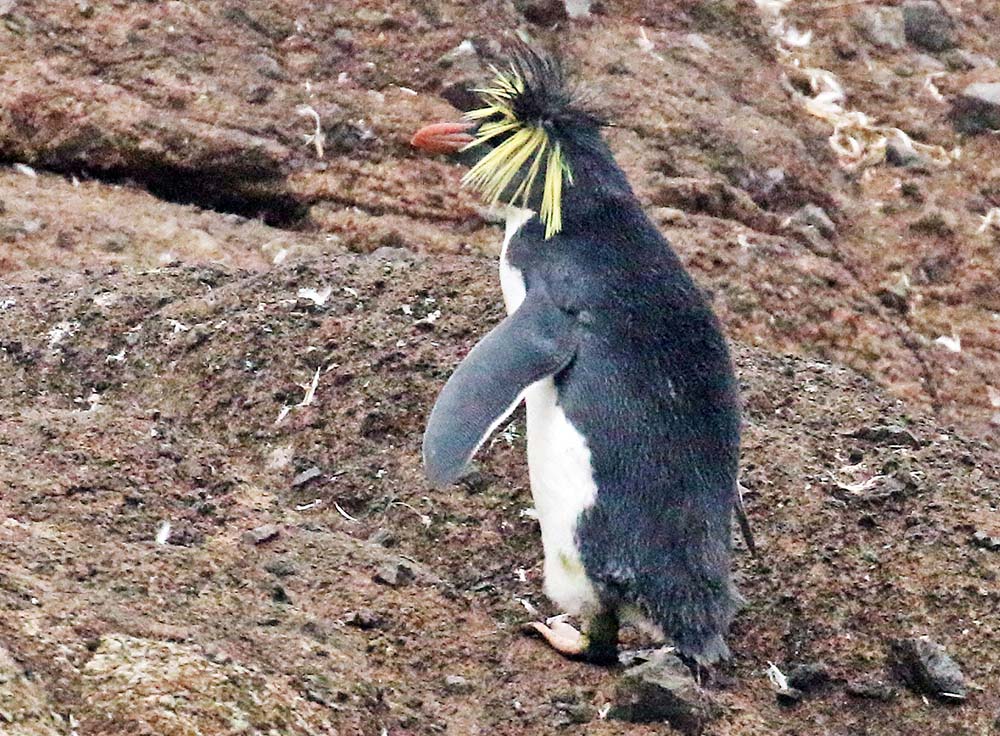 'Northern/Moseley's Rockhopper Penguin', (Nightingale Island)
'Northern/Moseley's Rockhopper Penguin', (Nightingale Island)The family Diomedeidae includes the largest of seabirds, the Albatrosses. Below is Thalassarche chlororhynchos, 'Atlantic Yellow-nosed Albatross'.
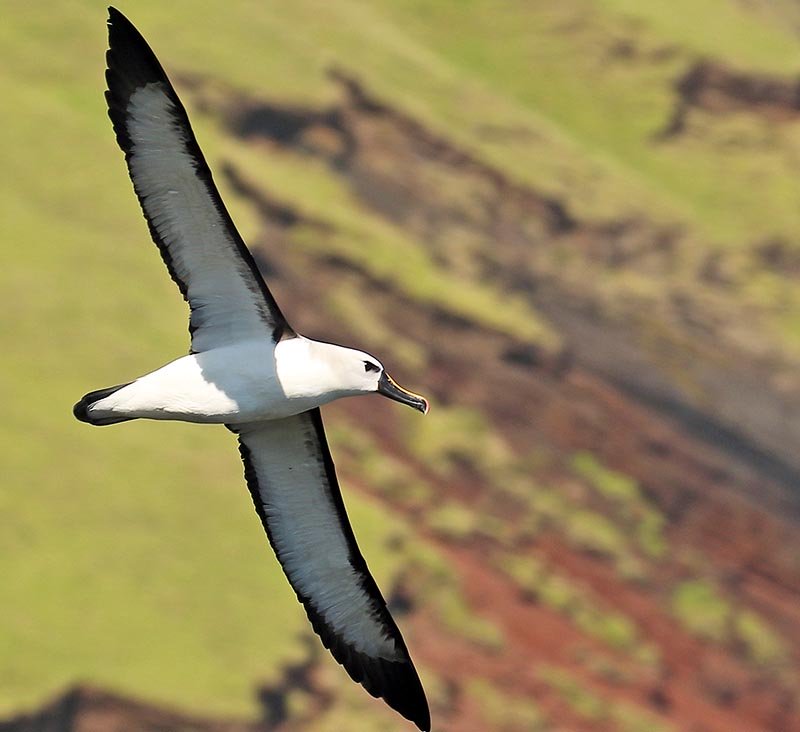 (Tristan da Cunha)
(Tristan da Cunha)One of the most diverse groups along the temperate South American coast are the family Phalacrocoracidae: the Cormorants. Below is Phalacrocorax gaimardi, 'Red-legged Cormorant', which lives along the west coast and southern part of east coast of South America, reflecting the cold waters of the Humboldt current.
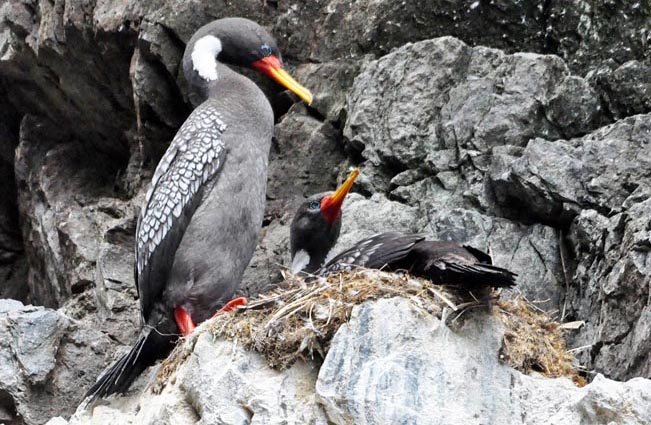 (Chile)
(Chile)Below is Leucocarbo magellanicus, 'Rock/Magellanic Cormorant/Shag'. This is a large black and white bird with striking red face patch. It is common on temperate coasts of southern South America.
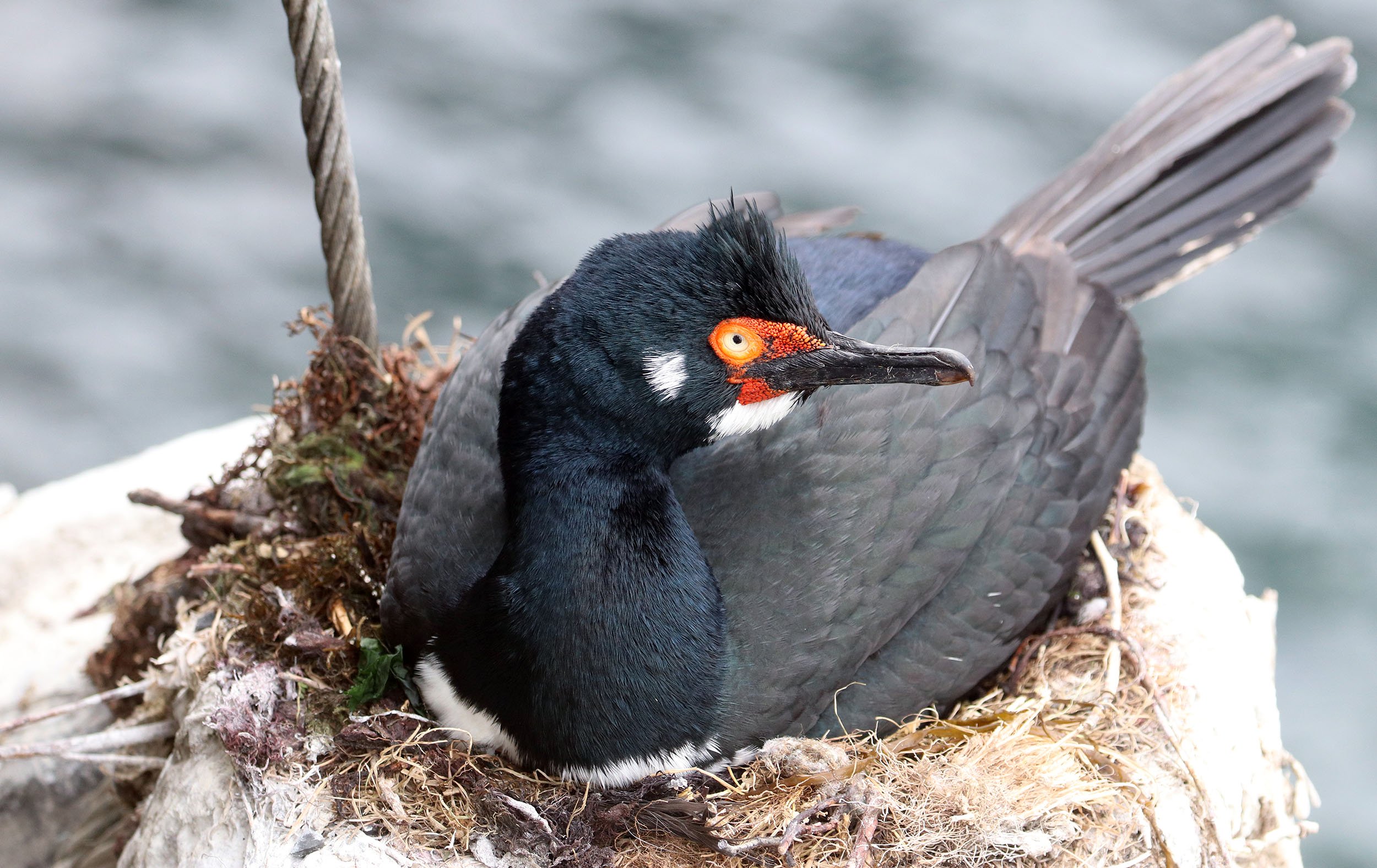 (Puerto Williams, Chile)
(Puerto Williams, Chile)There are about 15 species in the genus Cinclodes. They are found in cooler habitats in the Andes or coastal southern South America. In these habitats they are usually found near water, fresh or salt, where they hunt for invertebrates. They are all mostly brown, with some species having contrasting white on face or cheeks.
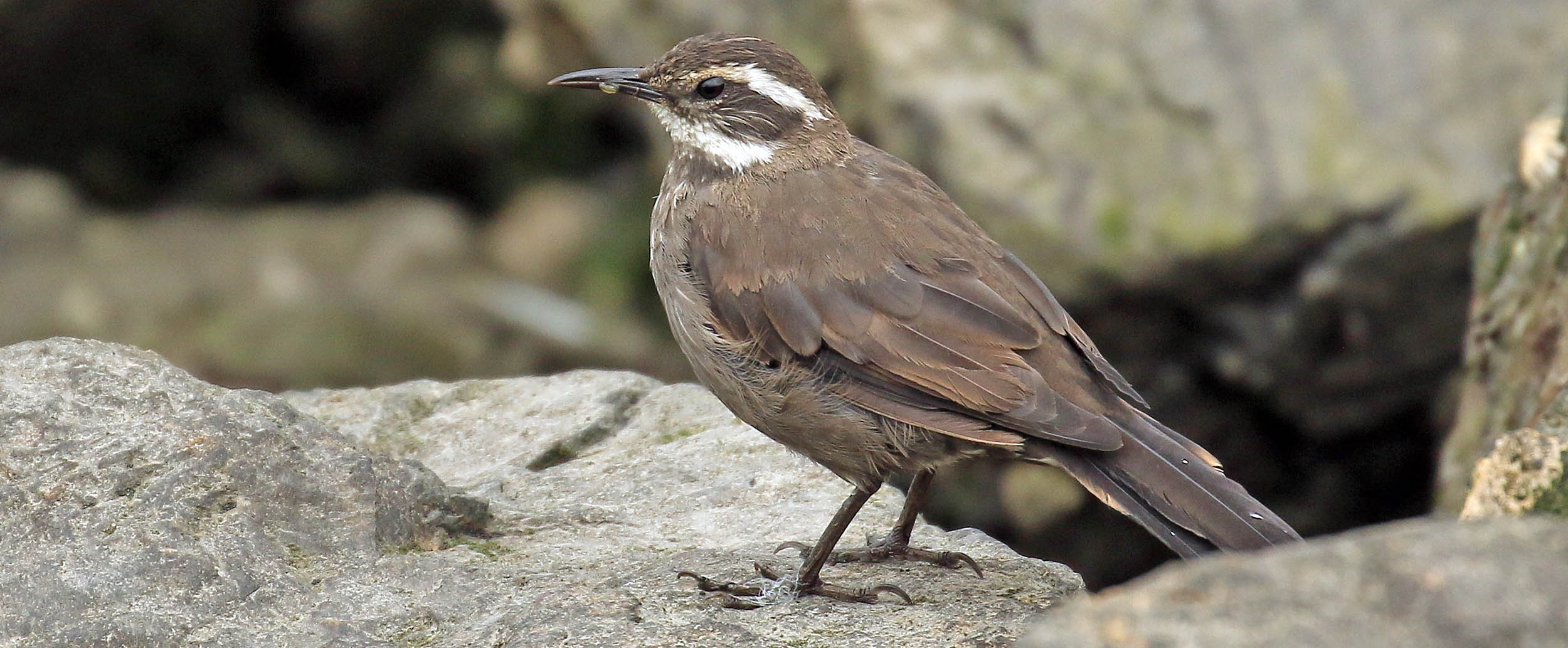 'Dark-bellied Cinclodes', (Ushuaia)
'Dark-bellied Cinclodes', (Ushuaia) ‘Grey-flanked Cinclodes’, (Ushuaia)
‘Grey-flanked Cinclodes’, (Ushuaia)One of the rarer mammals along the coast is Lontra felina, 'Marine Otter'.
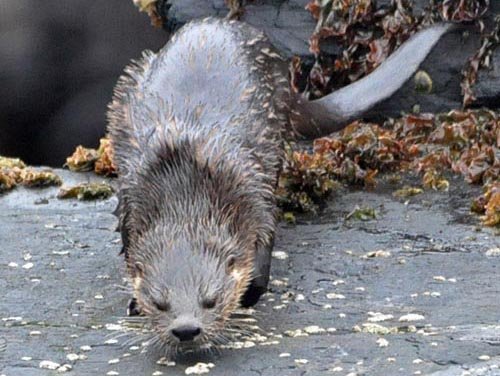 (Chilean Fiords)
(Chilean Fiords)Below is Otaria flavescens, 'South American Sea Lion'. This species is found along both west and east South American coasts (although due to the Humboldt current is found further north along the west coast than east). They are also found on the Falklands/Malvinas and out to the islands of the mid-Atlantic ridge. South American Sea-lions have among the most obvious sexual dimorphism of the eared seas. The males can be twice as heavy as the females, and have a large 'mane' of hair, thus the name 'sea-lion'.
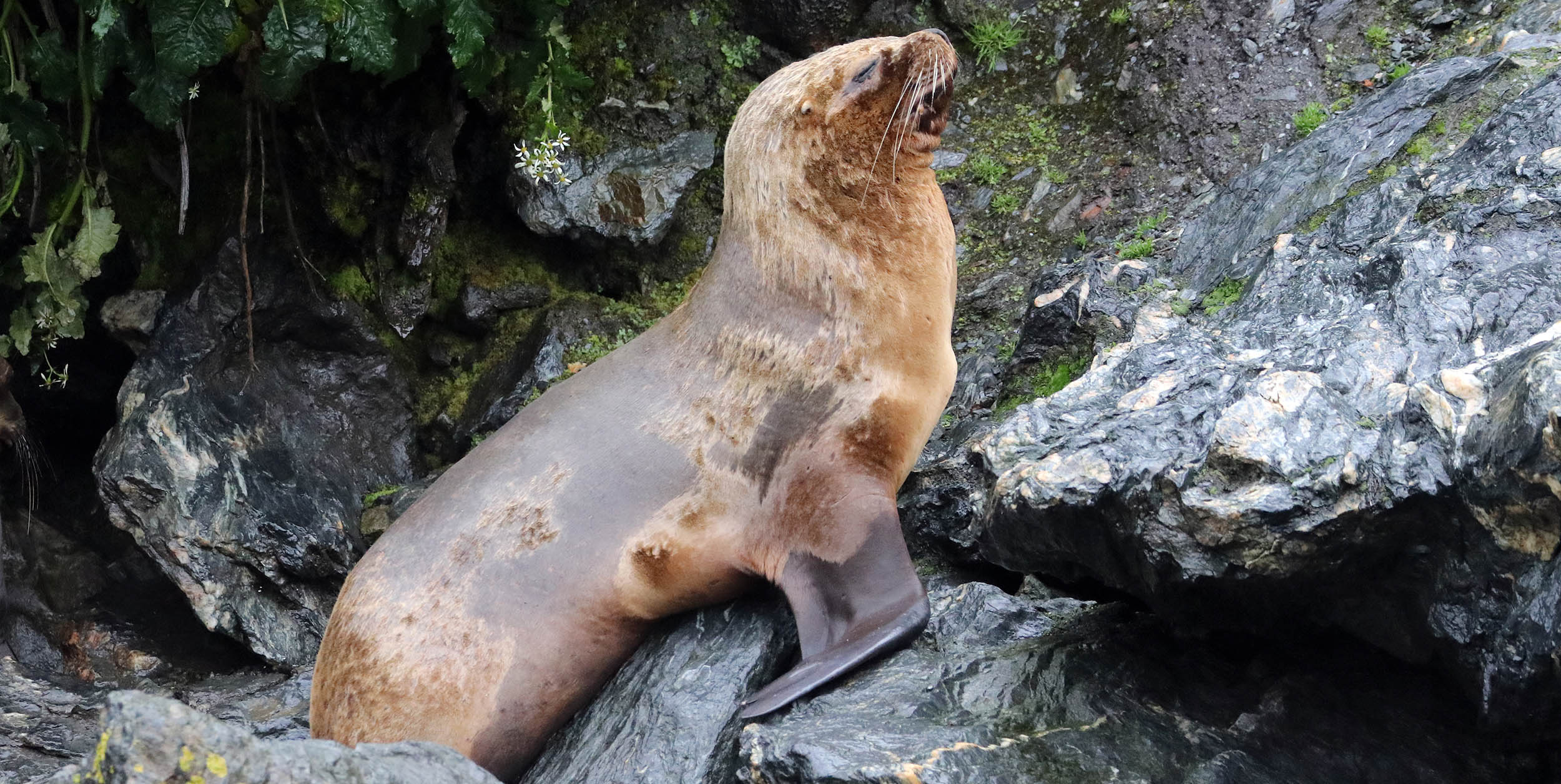 (female South American Sea-lion, Garibaldi, Chilean Fjords)
(female South American Sea-lion, Garibaldi, Chilean Fjords)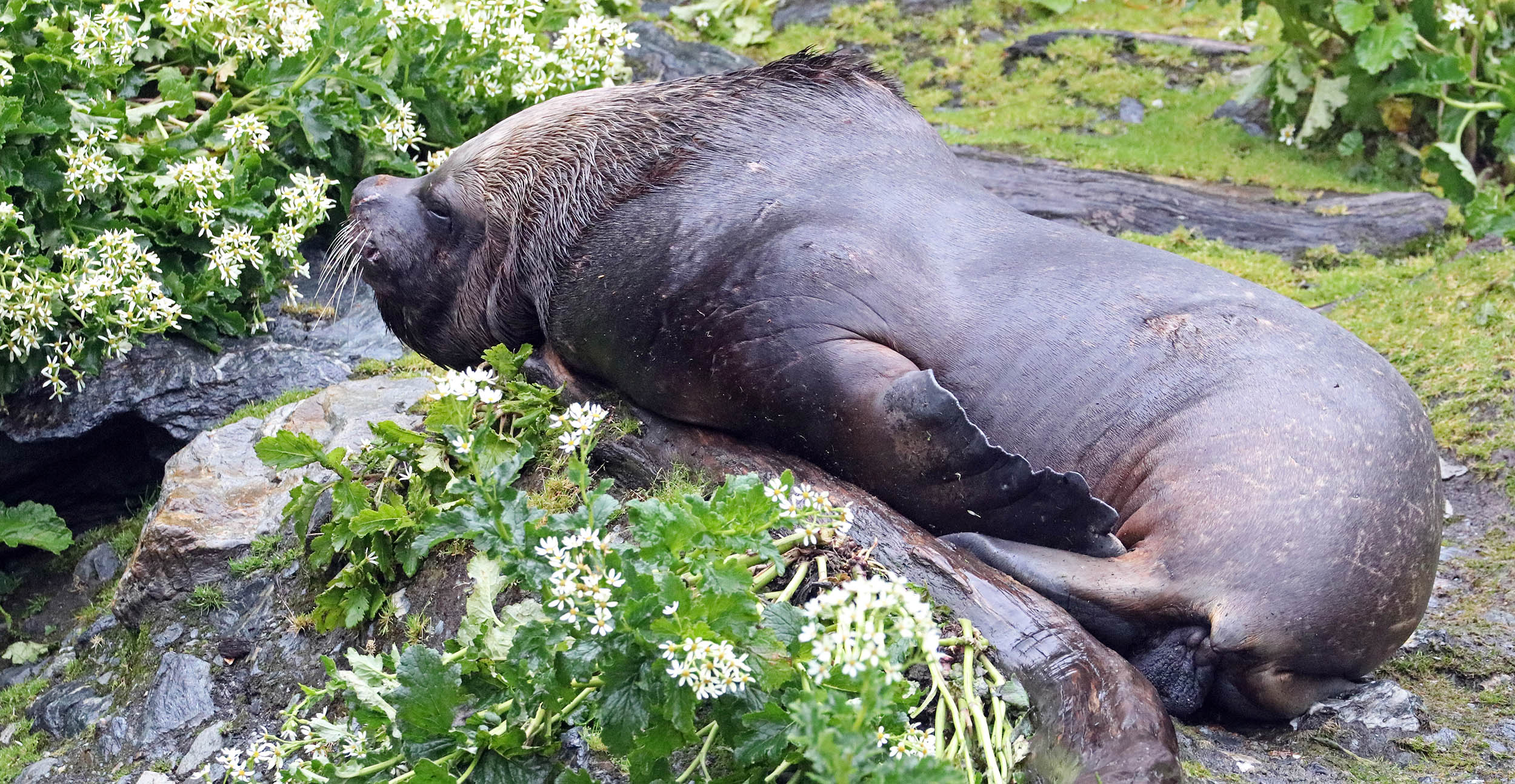 (male South American Sea-lion, Garibaldi, Chilean Fjords)
(male South American Sea-lion, Garibaldi, Chilean Fjords)Below is Arctocephalus australis, 'South American Fur Seal'. Breeds on the coast of southern South America and nearby islands.
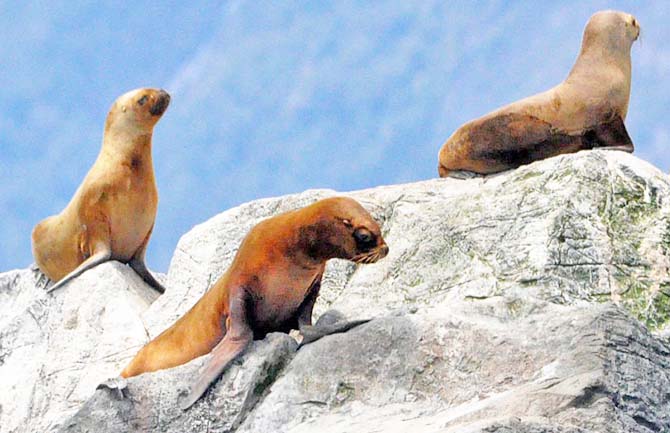 South American Fur Seal, (Tic Toc reserve, Chile)
South American Fur Seal, (Tic Toc reserve, Chile)Another similar species in the same genus here is: Arctocephalus tropicalis, 'Subantarctic Fur Seal'. Breed on remote islands in the southern parts of the Indian and Atlantic Oceans. Their inappropriate scientific epithet comes from when the species was described from a dead specimen found washed up on a tropical Australian seashore.
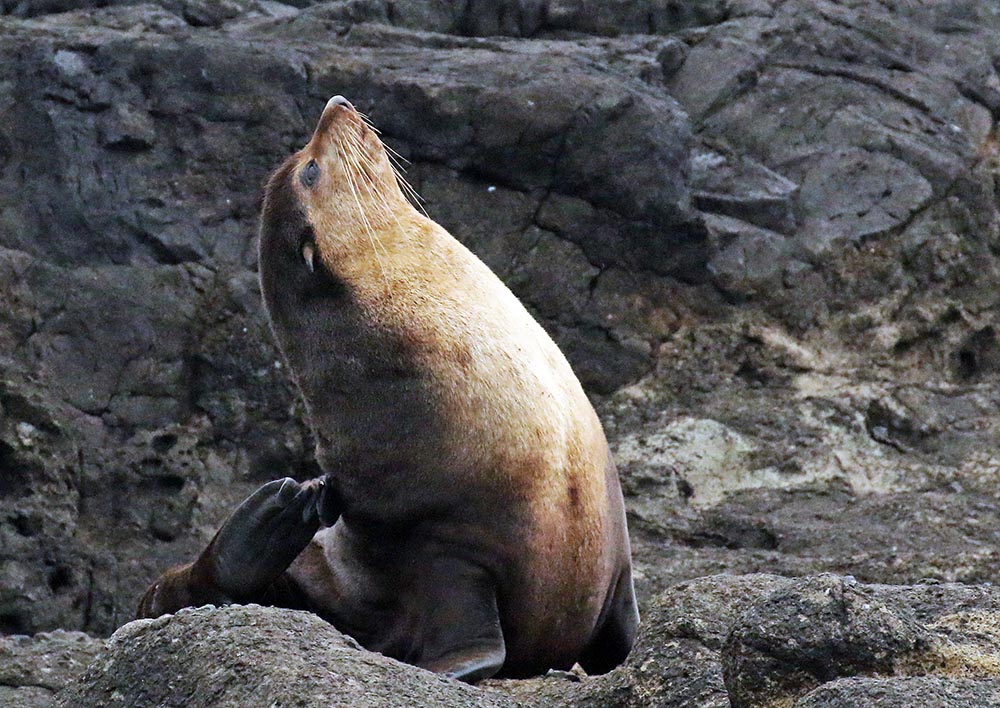 Subantarctic Fur Seal (Tristan da Cunha)
Subantarctic Fur Seal (Tristan da Cunha)Places to experience the South American temperate seashore
National parks and other areas to explore the temperate seashores around southern South America include: Tic Toc Nature Reserve in the Chilean Fiords, Chile, as well as Tristan da Cunha.
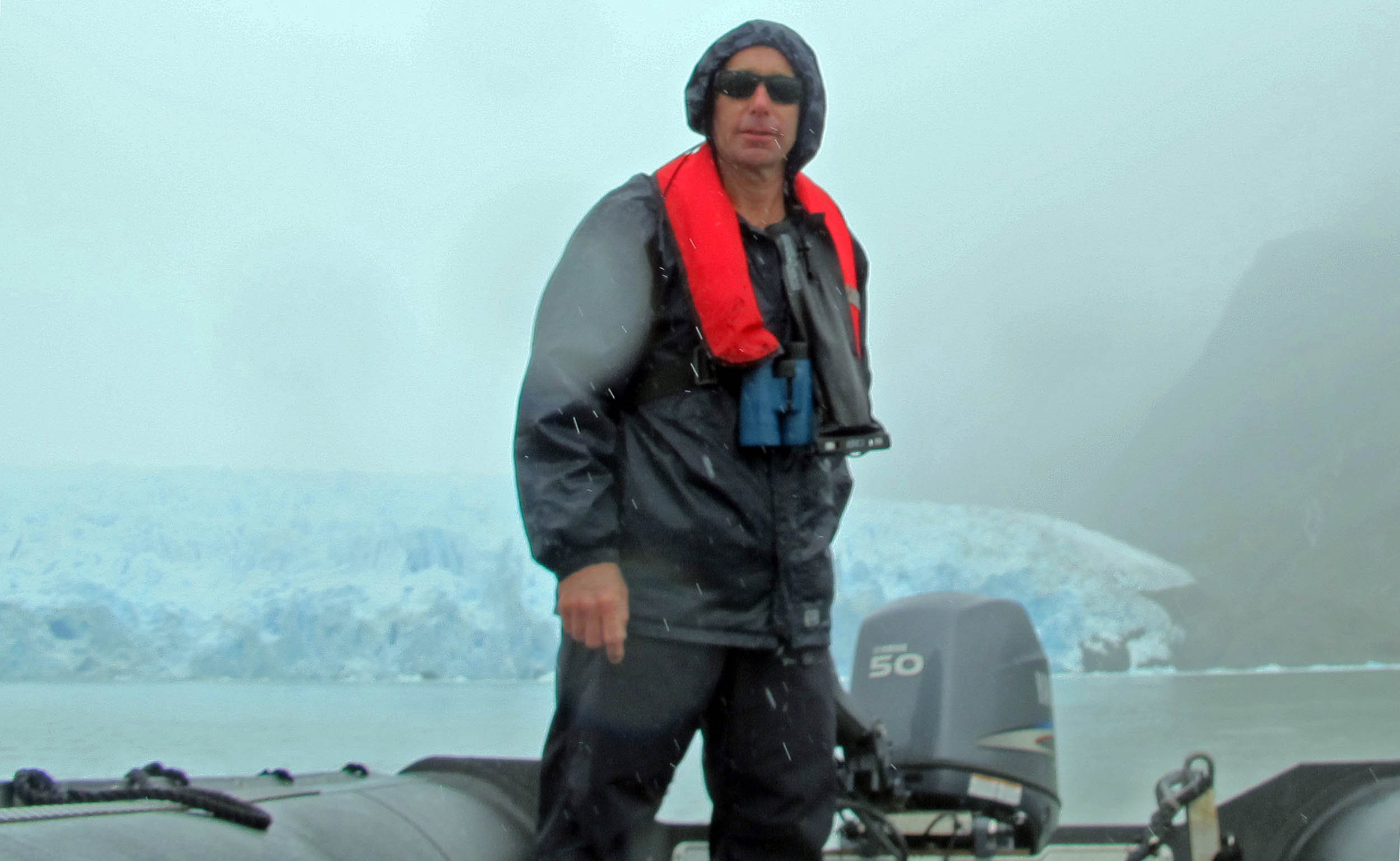 The author Damon Ramsey 'enjoying' the Chilean Fjords with Noble Caledonia in 2012. Yes, that's a glacier behind me - it gets cold!
The author Damon Ramsey 'enjoying' the Chilean Fjords with Noble Caledonia in 2012. Yes, that's a glacier behind me - it gets cold!